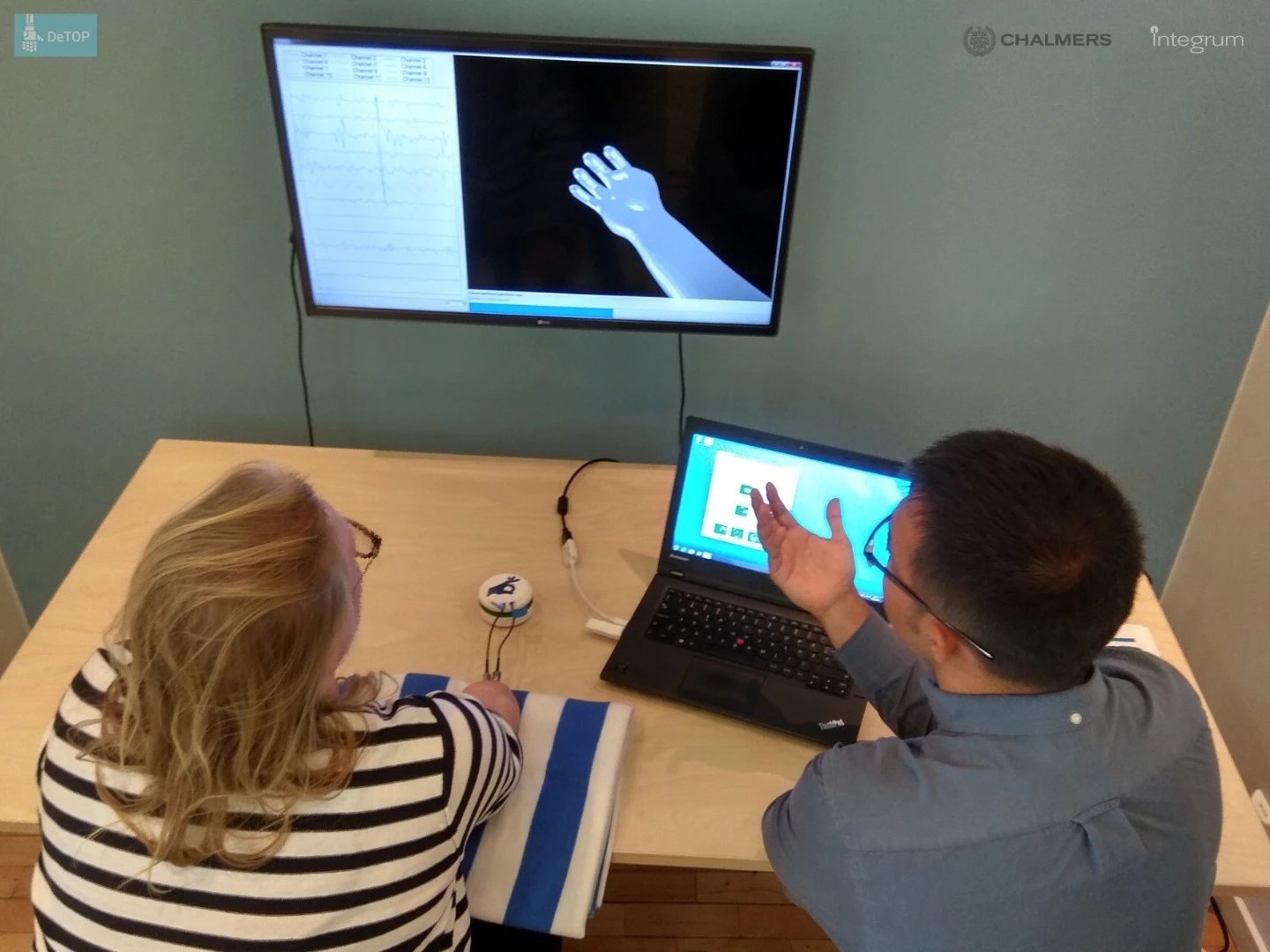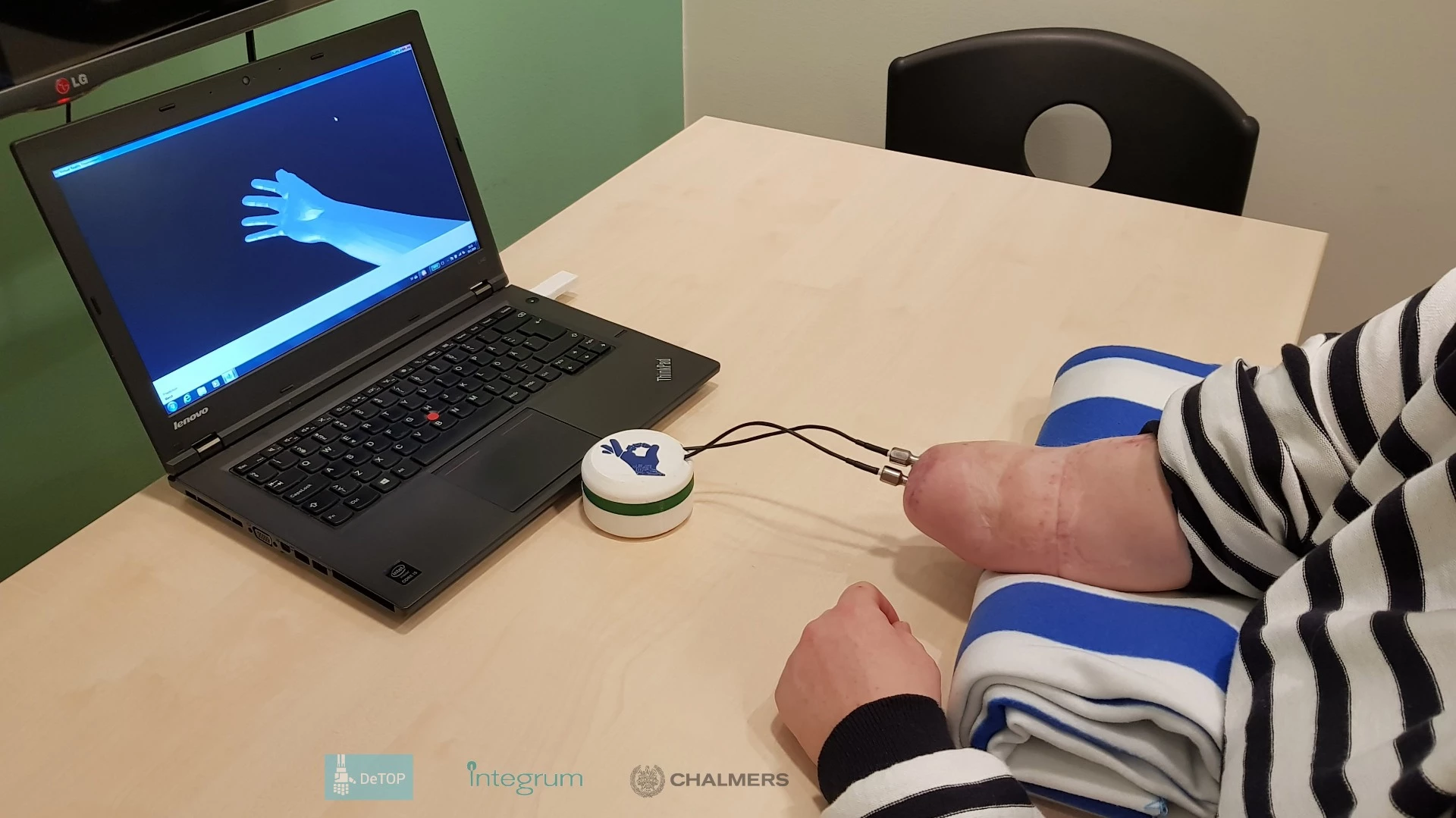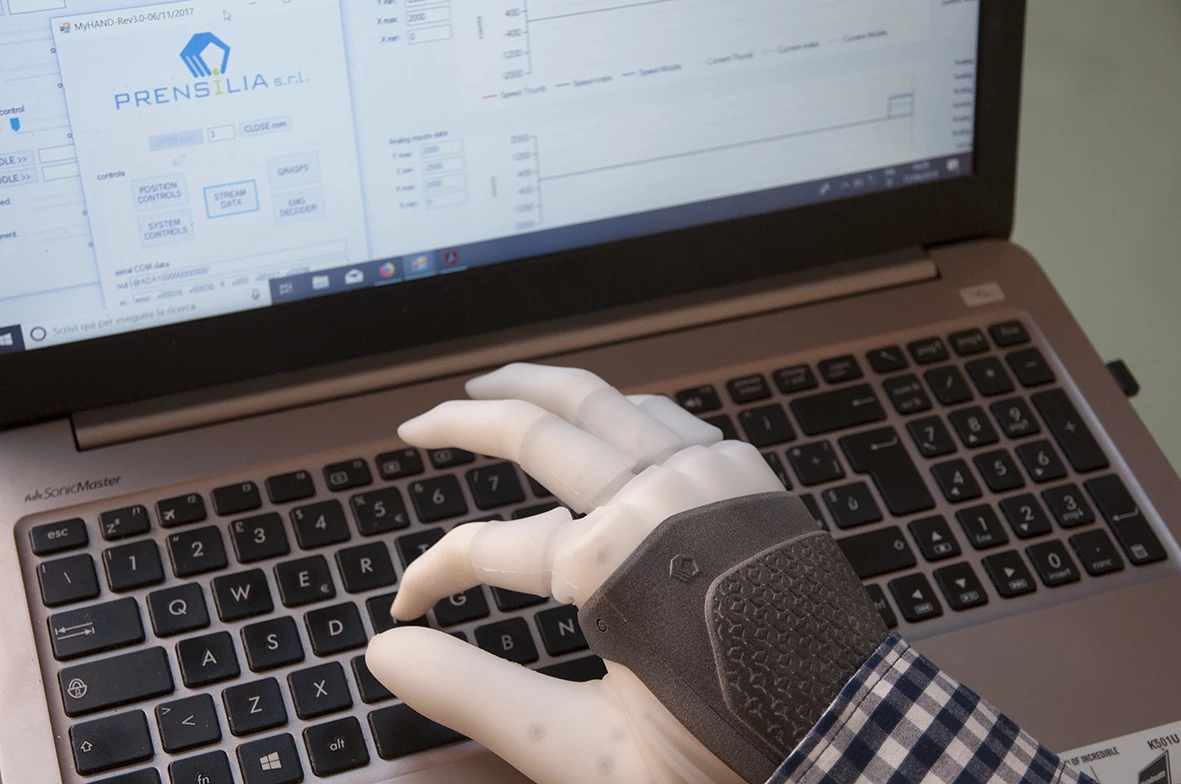Prosthetic hands can currently be controlled by placing electrodes on the skin that register signals from muscles underneath. But this method has its limitations, allowing only for simple movements to be performed, such as opening and closing the hand, and the user doesn't get much in the way of feedback from the prosthetics. A collaboration working under the EU-funded DeTOP project has developed a new hand prosthesis that reads signals direct from nerves and muscles via electrodes implanted in the patient's arm.
A Swedish amputee recently underwent surgery at Sahlgrenska University Hospital in Gothenburg to receive an osseo-neuromuscular implant for controlling a dexterous hand prosthesis.
Titanium implants were slotted into the radius and ulnar of the patient's right arm, and a total of 16 electrodes were connected to nerves that would have led to the missing hand. Signals from those nerves were then converted into commands for a robotic hand prosthesis.
As well as making more refined hand movements possible, the technique is reported to provide sensory feedback to the patient from the prosthesis itself, in the form of tactile sensations, which should help the user determine how much force to apply when grasping an object – something that's not easy to do when relying on visual cues only.
The first recipient of the new technology is currently learning how to control her new prosthesis using virtual reality, before going on to use it in her daily life. With the first success in the bag, more patients are lining up for implant surgery.
Source: DeTOP






